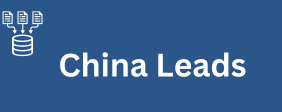Using analytics to identify and target inactive subscribers effectively is a crucial strategy for maintaining a healthy and engaged subscriber base. Inactive subscribers can negatively impact your email campaigns’ performance and deliverability. Here’s a step-by-step approach to using analytics for this purpose: Define Inactivity: Begin by defining what constitutes an inactive subscriber. This could be based on the number of times they’ve engaged with your emails over a certain period. For instance, subscribers who haven’t opened or clicked any email in the past three months might be considered inactive. Segmentation: Utilize your email marketing platform’s segmentation features to group inactive subscribers together.
To gather insights about inactive subscribers
Look at metrics such as open rates, click-through rates, and conversion rates. Compare the behavior of inactive subscribers with active ones to identify patterns or differences. Engagement History: Examine the engagement history of inactive subscribers. Determine if there Photo Background Removing was a particular point at which their interactions decreased. This could be linked to specific types of content, timing, or changes in your email strategy. Re-engagement Strategies: Develop personalized re-engagement campaigns based on your analysis. Craft compelling subject lines and content to entice inactive subscribers back into engaging with your emails. Offer incentives, exclusive content, or discounts to encourage them to take action. A/B Testing: Use A/B testing to refine your re-engagement strategies.
Subscriber opens an email but doesn’t click
Send them a follow-up email with more information related to the opened content. Optimize Frequency: Analyze the frequency at which you’re sending emails to inactive subscribers. Perhaps BTC Email List they became disengaged due to email overload. Adjust your sending frequency and monitor the impact on re-engagement rates. Segmented Content: Tailor your content to cater to the preferences of inactive subscribers. If your analysis shows that they engaged with specific topics in the past, create content that aligns with those interests. Monitor Progress: Continuously monitor the success of your re-engagement campaigns using analytics.

